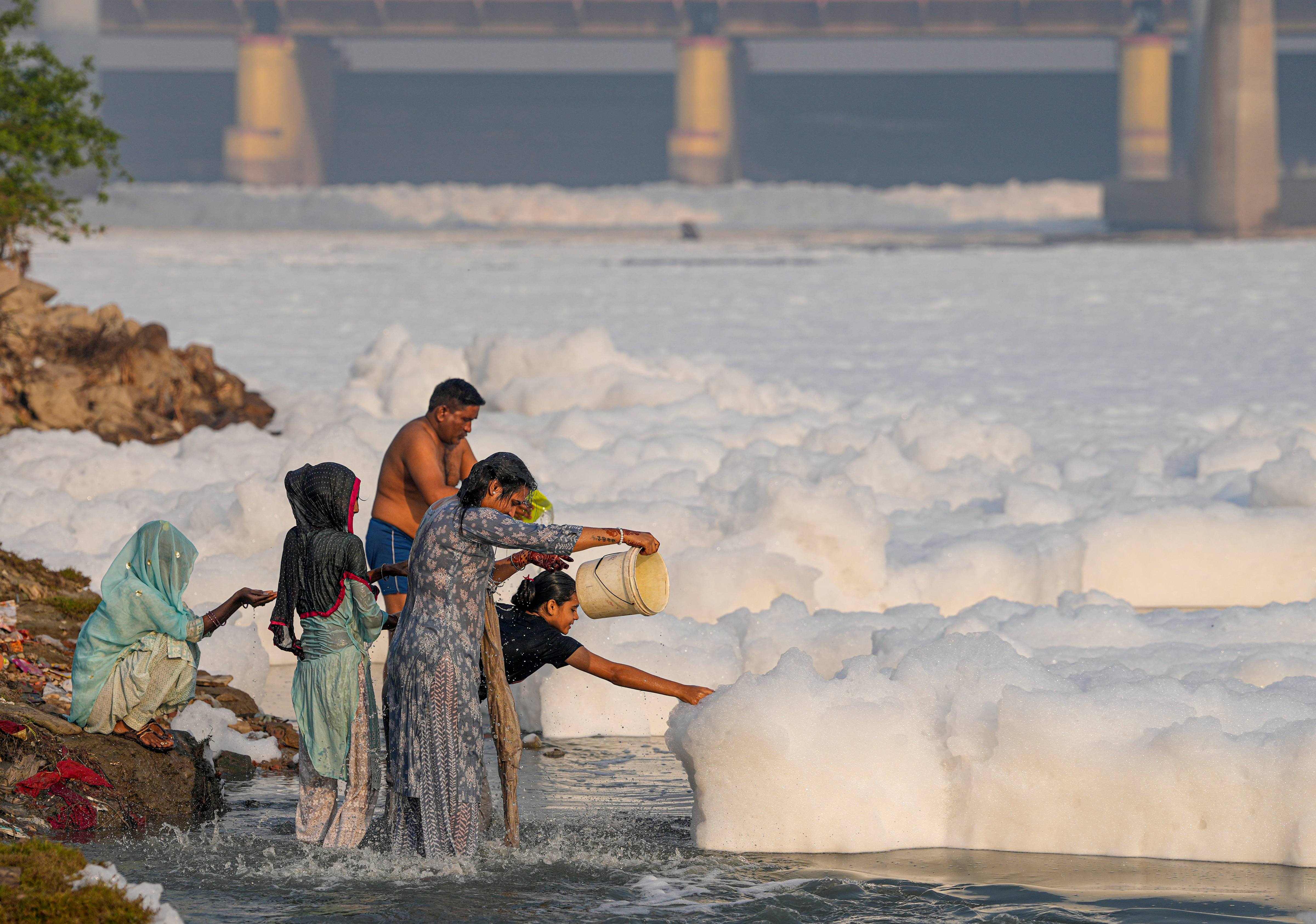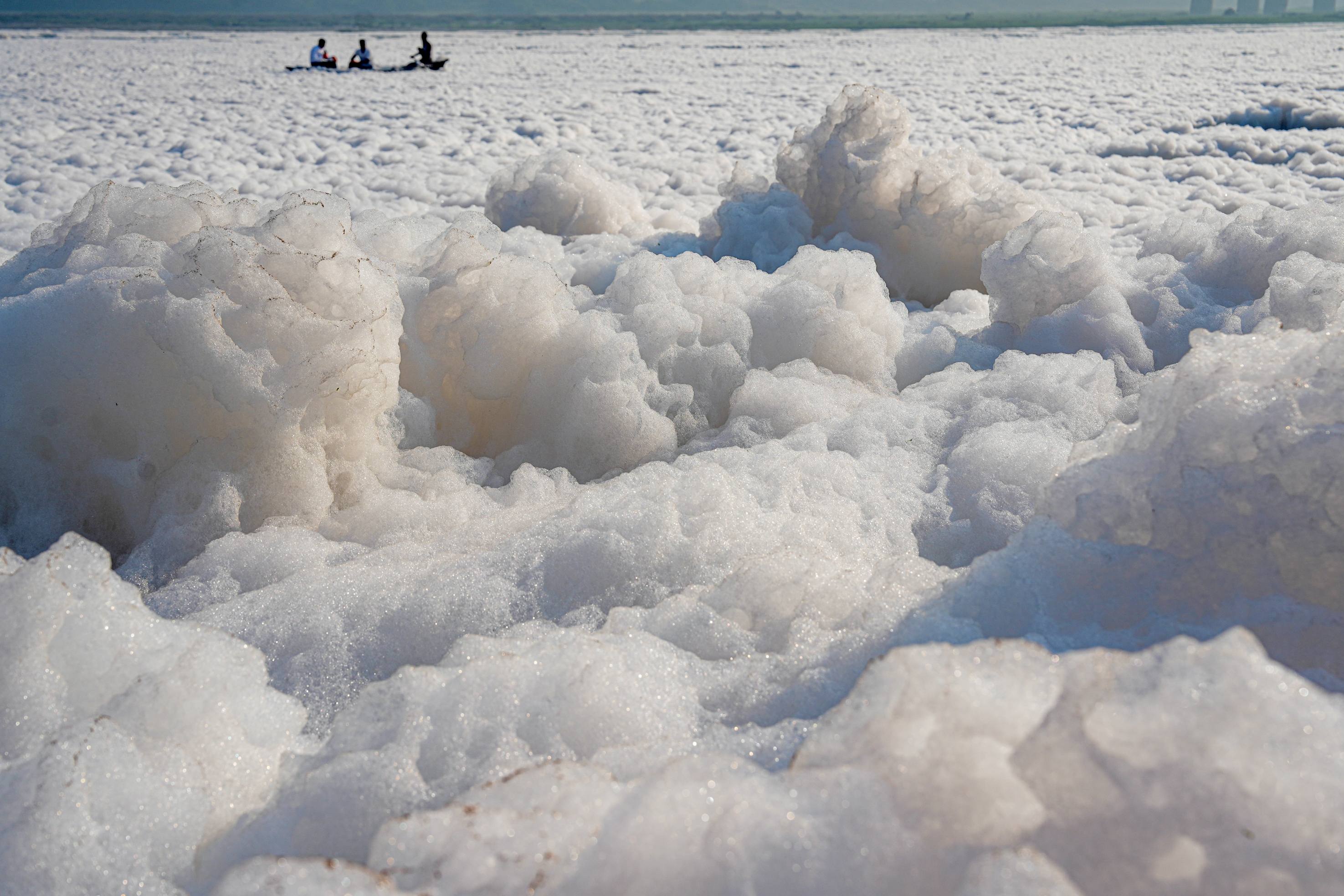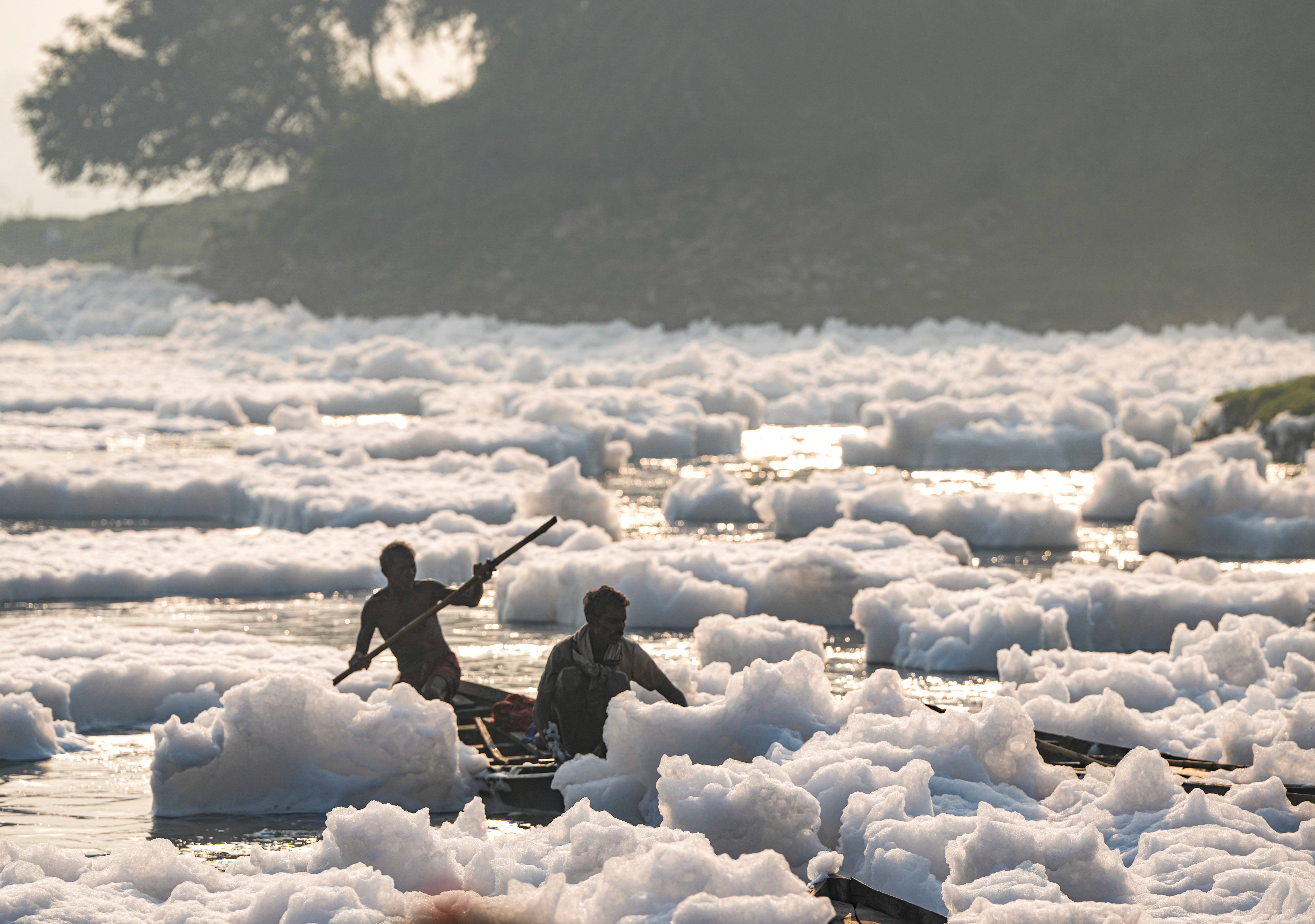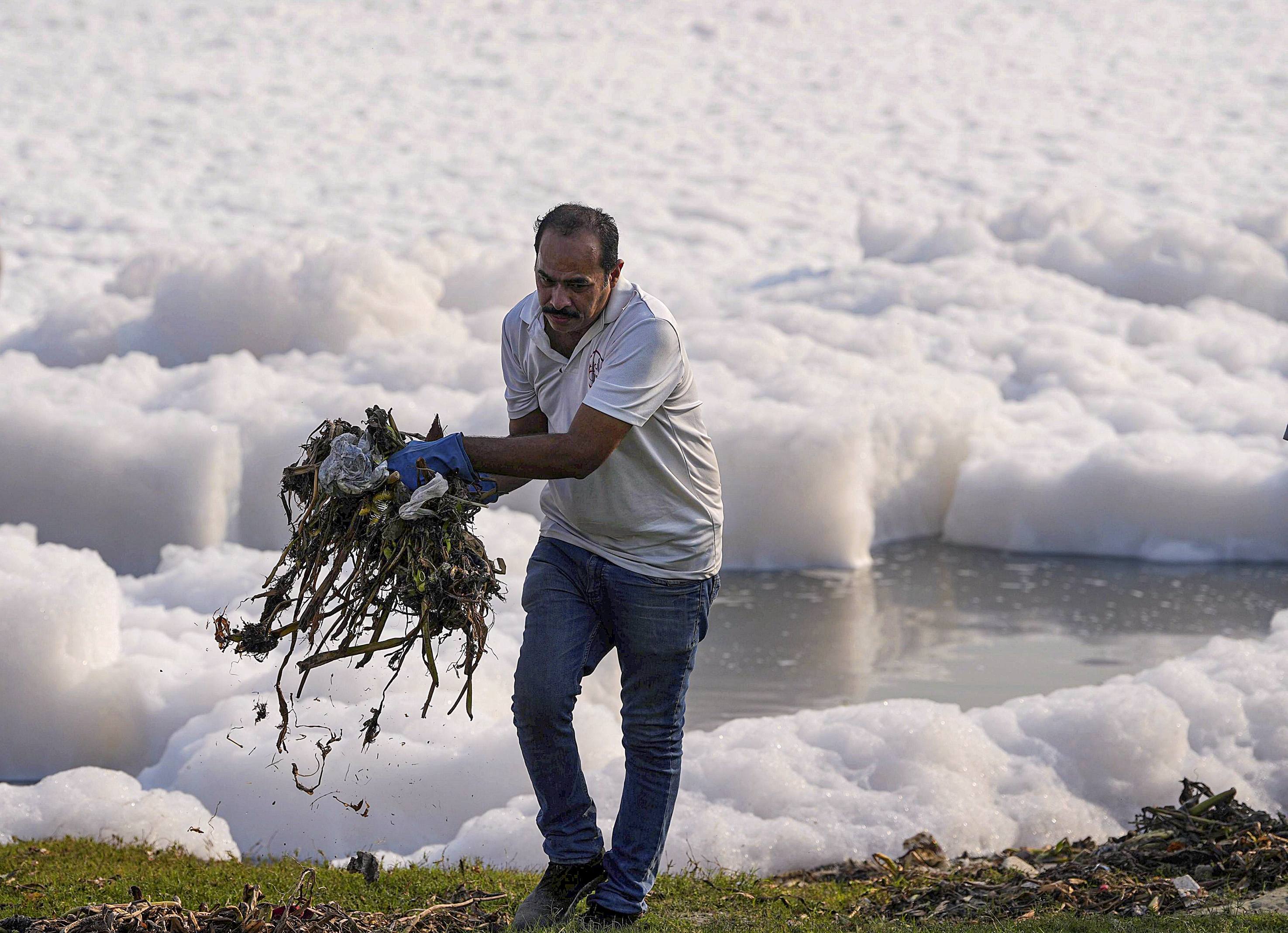A "teardrop on the cheek of time” is how Rabindranath Tagore wanted to remember the Taj Mahal. The 'teardrop' could also be a metaphor used by the poet to represent the tragedy that befell Shah Jahan as he spent his last days in captivity, gazing at the mausoleum sadly and its reflection in the Yamuna.
The Yamuna is an integral part of the Taj’s design and there was no anticipation that it would dry or become narrow in the future. But the river has narrowed and it is also polluted. A polluted and narrower Yamuna could promote the disintegration of the wooden foundations on which the Taj Mahal was built.
Thus, to retain the structural integrity of the Taj Mahal, a free-flowing Yamuna in its original form is a must. A free-flowing, unpolluted Yamuna is also paramount to the welfare and health of millions dependent on its services.

The origins
The Yamuna River, a tributary of the Ganga, which many Indians consider a Goddess, originating from the Yamamori glacier in the Garhwal Himalayas, has become the most polluted as it approaches the surroundings of Delhi, which contributes about 76 per cent of the river's pollution, Frothing of the Yamuna has become a yearly phenomenon near Delhi where two governments are in power. Thousands of crores of rupees have already been spent on cleaning the river.
Toxic Foam
Since last week, the parts of the Yamuna River in Delhi have again been covered with a thick layer of white foam, posing health hazards for people, especially as the festive season approaches, a double whammy as the capital city, ranked as the most polluted city in the world, is battling the air pollution, too. Chhath Puja, to be celebrated on 5 November, this year, requires the devotees to take a dip in the river now appears hampered because of the state of the river.
This takes us back to Victor Mallet’s question in his book on the River Ganga, River of Life, River of Death: how can a river be worshipped by so many Indians and simultaneously abused by the same people? Despite the Indians' civilisational attachment to the river goddesses, they have dirtied the waters, finding themselves almost at a point of no return. One stark truth, with a direct consequence for the river flow, is that the mother source of all great Himalayan rivers, including the Yamuna, the Himalayan glaciers are also drying up, partly accelerated by anthropogenic activities in the mountains.

The contributors
The untreated garbage spewed from the hotels into the waters, and unauthorised constructions threaten the river. Any laws introduced to restrict such building activities will ultimately be diluted under pressure. The untreated discharge is directly pumped into the river.
The pesticides used for farming also leak into the river, leading to eutrophication, enriched in nutrients that promote invasive plants and algal blooms. The urgency in sanitation efforts is becoming increasingly obvious because these rivers are host to very potent bacterial genes, exposing millions of water users including villagers in the downstream parts to the risk of infections resistant to antibiotics.

Many segments of the Yamuna near Delhi have been used for dumping, plastics, industrial waste, and untreated sewage. The white puffy foam with a pungent stench contains high concentrations of ammonia and phosphates from industrial waste that can cause skin diseases.
Central Pollution Control Board and its state affiliates are the most ineffective monitoring agencies with poor to non-existent regulatory practices and enforcement. Despite the rousing speeches about tackling the problem of pollution, isn’t surprising that we still do not have a standard for soil contamination.

The 'restoration' journey so far
The river restoration programme called the ‘Yamuna Action Plan’ was initiated in 1993, as a bilateral project between India and Japan. In its report for the year 2012-13 for the Union environment ministry, The Parliamentary Committee on Environment and Forests found that the mission to clean Ganga and Yamuna has failed. Over the years, thousands of crores of rupees have been spent on cleaning Yamuna as part of the “Namami Gange Programme”, a flagship programme by the Union Government.
The government is not moving fast enough to establish green technology in the urban centres including cities with sewage and waste treatment plants. Such alt-technology also has a huge employment potential for the burgeoning population of unskilled and semi-skilled urban youth.
Apart from delays in execution, one of the weaknesses of the current Government is the ease with which it is distracted from its core tasks by pseudo-scientific or whimsical solutions Both the rivers, Ganga and Yamuna, are being misused in various ways, including unsustainable river-centric religious practices including dumping dead bodies and ritual detritus often packed in plastic bags.

How to clean Yamuna?
Despite challenges, the river cleanup is doable, although the endemic corruption and lazy bureaucracy pose severe challenges. All we have to do is take two simple steps: stop pollutants from entering the river and maintain minimum flow. But for these to happen, we need firm policies based on reliable field data. We need a goal-oriented implementation mechanism, although I remain sceptical seeing the years of botched efforts to clean Yamuna, a water body closest to the power centre.
From time immemorial, the rivers are humanity’s life-supporting systems, and these lifelines are dying, thus becoming an existential threat. A dispassionate scientific approach free from political considerations will only guarantee the restoration of these precious natural assets.
(Disclaimer: The opinions expressed in this article are those of the writer. The facts and opinions expressed here do not reflect the views of ETV Bharat)



